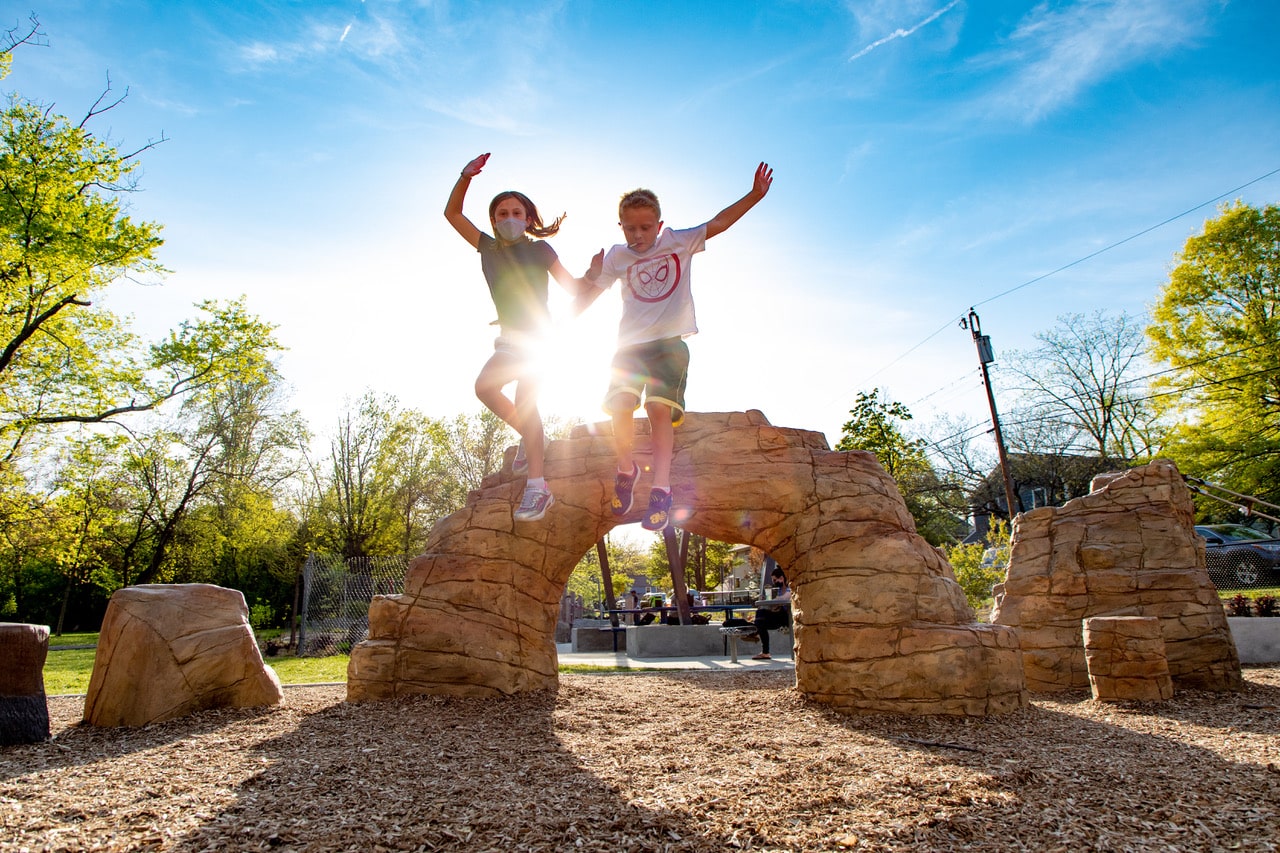Games of tag on the playground aren’t just good for getting your kids’ wiggles out— they’re also excellent learning opportunities! Kinesthetic learning, also known as hands-on or tactile learning, is a method that emphasizes the use of physical movement and activity to aid in the acquisition of knowledge and skills. This type of learning is often associated with play, as it allows children to engage with their environment and explore new concepts through hands-on activities. In this way, playgrounds can be wonderful sites for both formal and informal learning for children.
One of the main benefits of kinesthetic learning is that it allows children to actively participate in the learning process. Rather than simply listening to a lecture or reading a textbook, students are able to physically manipulate objects and engage with the material in a way that is meaningful to them. For instance, a child might be more interested in learning about physics if they can test the law of gravity from atop a climbing structure, or they could be more immersed in a story if they can act it out in the outdoors. These strategies can help to increase children’s engagement and motivation, as they are more likely to be invested in the learning process when they are actively participating in it.
Another benefit of kinesthetic learning is that it can help to improve students’ problem-solving skills. Hands-on activities often require students to think critically and creatively in order to solve a problem or complete a task. Group games and activities on the playground can teach communication and cooperation, as well as help to develop important skills such as critical thinking, creativity, and decision-making. It can also help them learn respect for others and for the playground equipment and environment.
Kinesthetic learning can also be beneficial for children with different learning styles. Some students may experience difficulty with traditional classroom teaching methods, such as lectures and reading assignments, but may excel when given the opportunity to learn through hands-on activities. Using the playground as a space for learning can help to ensure that all students have the opportunity to learn and succeed, regardless of their preferred learning style. This is why our team at Midstates Recreation strives to make our playgrounds inclusive and accessible for children of all abilities.
In addition to these benefits, kinesthetic learning can also be a lot of fun! Play is an important aspect of kinesthetic learning, as it allows students to engage with the material in a way that is enjoyable and meaningful to them. Play can also help to increase students’ motivation and engagement, as they are more likely to be invested in the learning process when it is something that they enjoy. More importantly, play is important for children because it allows them to explore and learn about the world around them in a safe and engaging way and provides them with an outlet for their feelings and energy.
The possibilities for playgrounds are endless. Midstates Recreation designs, supplies, and builds community-enhancing recreational play and site structures. Midstates Recreation offers a variety of playground equipment in communities located in Indiana, Kentucky, Michigan, and Ohio. Our emphasis is not only to create play and recreation spaces for all but to also provide a truly valuable and inclusive addition to your community! Contact your local sales representative to learn more.


